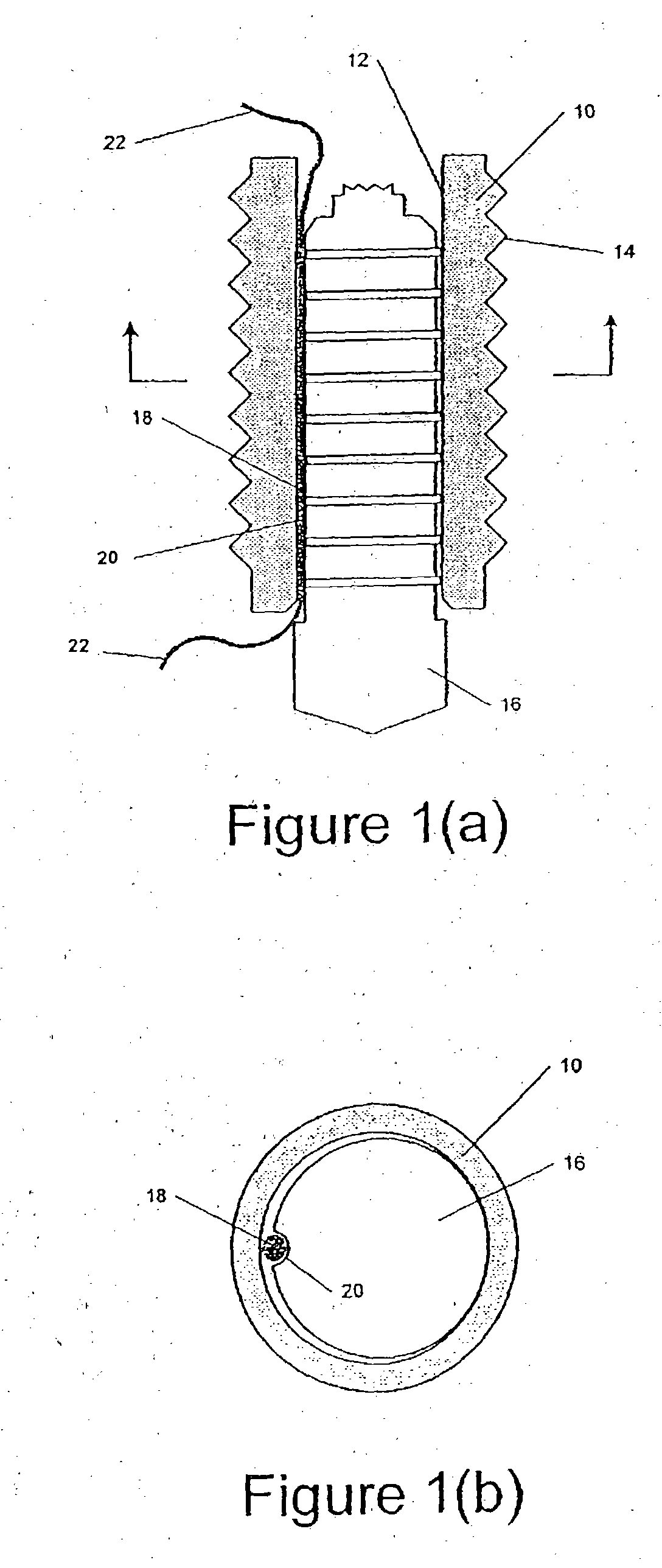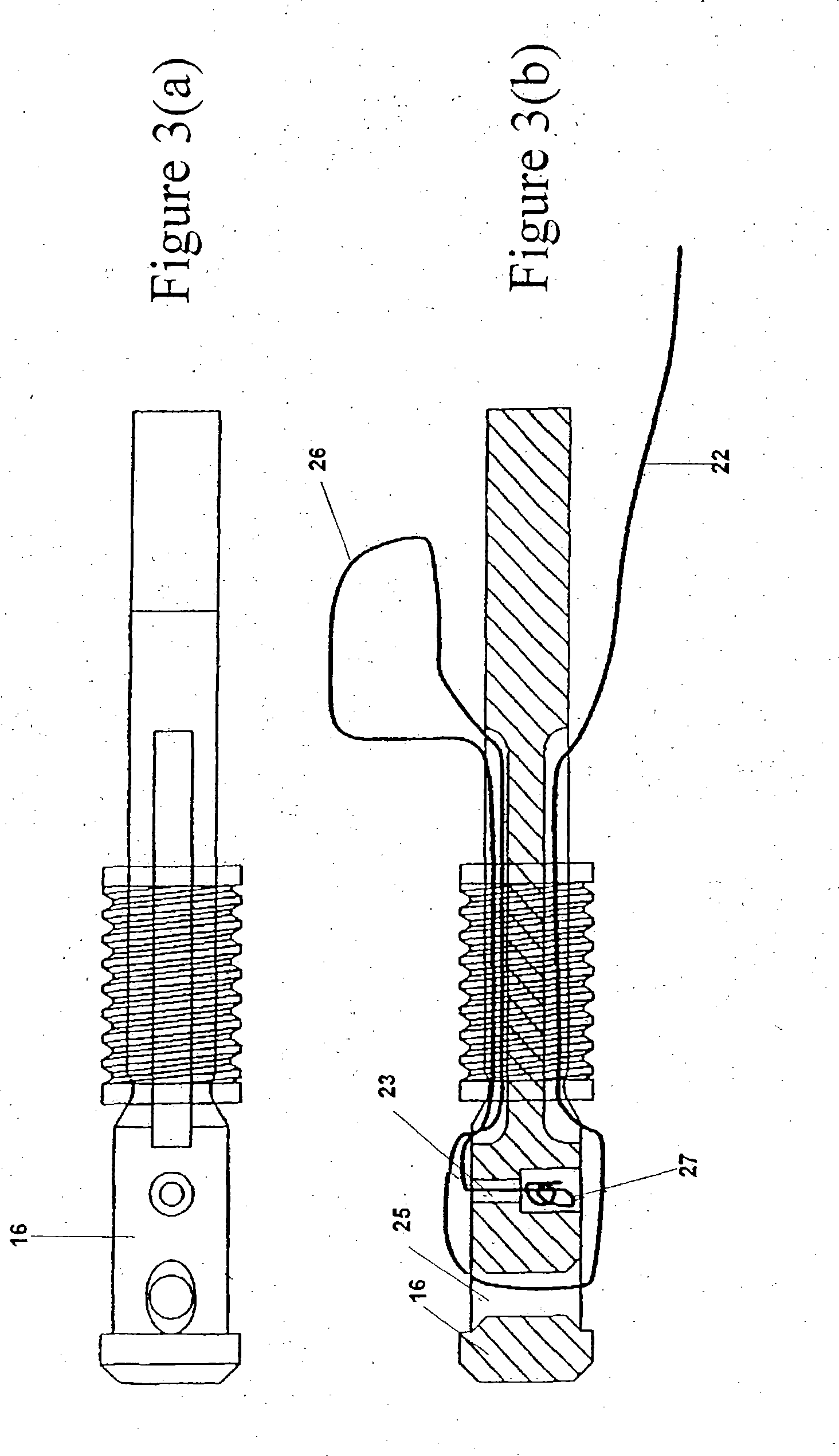Self-locking suture anchor
a self-locking, suture technology, applied in the field of surgical fasteners, can solve problems such as weak interference fi
- Summary
- Abstract
- Description
- Claims
- Application Information
AI Technical Summary
Benefits of technology
Problems solved by technology
Method used
Image
Examples
Embodiment Construction
[0017]FIG. 1a shows a cutaway view of a suture anchor according to the invention. The anchor comprises an anchoring element 10, which is adapted to be embedded in a bone tunnel or in soft tissue, and comprises an axial channel 12. In the embodiment shown, element 10 comprises a series of ridges 14 on its outer surface, which aid in securing the element, for example, in a bone tunnel. It will be understood that the ridges 14 are not a necessary element of the anchor, and may be omitted if desired. The anchor 10 further comprises an insertion stem 16. When the anchor is in the deployed position shown in FIG. 1a, the insertion stem 16 is held within the axial channel 12, e.g., by interference fit. In preferred embodiments, the insertion stem 16 is slightly larger than the axial channel 12, so that the stem 16 forces the anchoring element 10 to expand when it is inserted therein, thereby securing the anchor firmly in the bone tunnel.
[0018] The anchor further comprises a filament 18, e....
PUM
 Login to View More
Login to View More Abstract
Description
Claims
Application Information
 Login to View More
Login to View More - R&D
- Intellectual Property
- Life Sciences
- Materials
- Tech Scout
- Unparalleled Data Quality
- Higher Quality Content
- 60% Fewer Hallucinations
Browse by: Latest US Patents, China's latest patents, Technical Efficacy Thesaurus, Application Domain, Technology Topic, Popular Technical Reports.
© 2025 PatSnap. All rights reserved.Legal|Privacy policy|Modern Slavery Act Transparency Statement|Sitemap|About US| Contact US: help@patsnap.com



